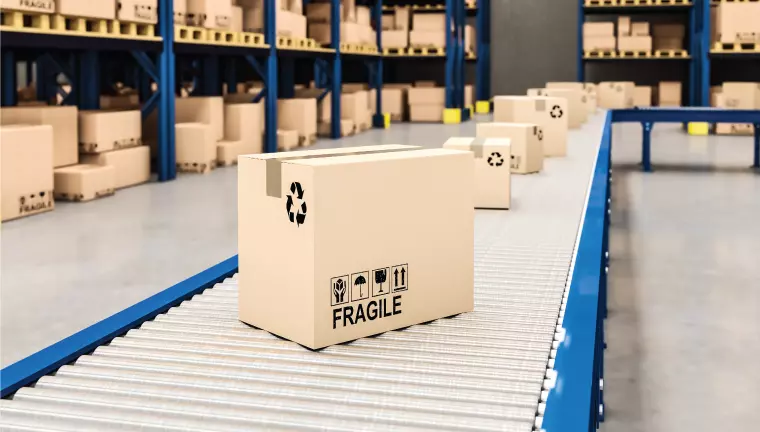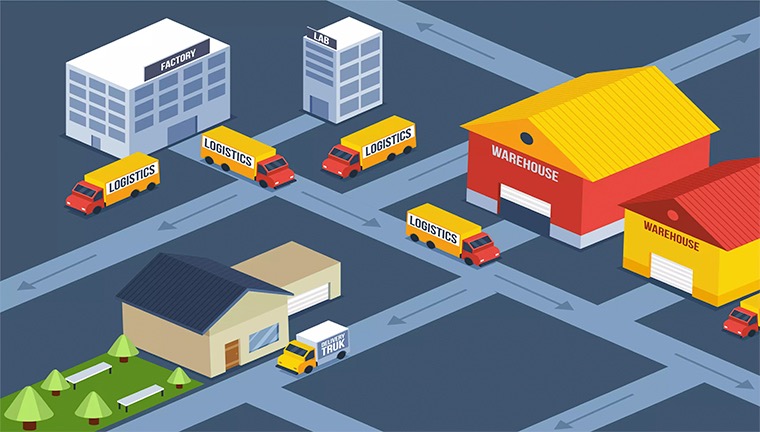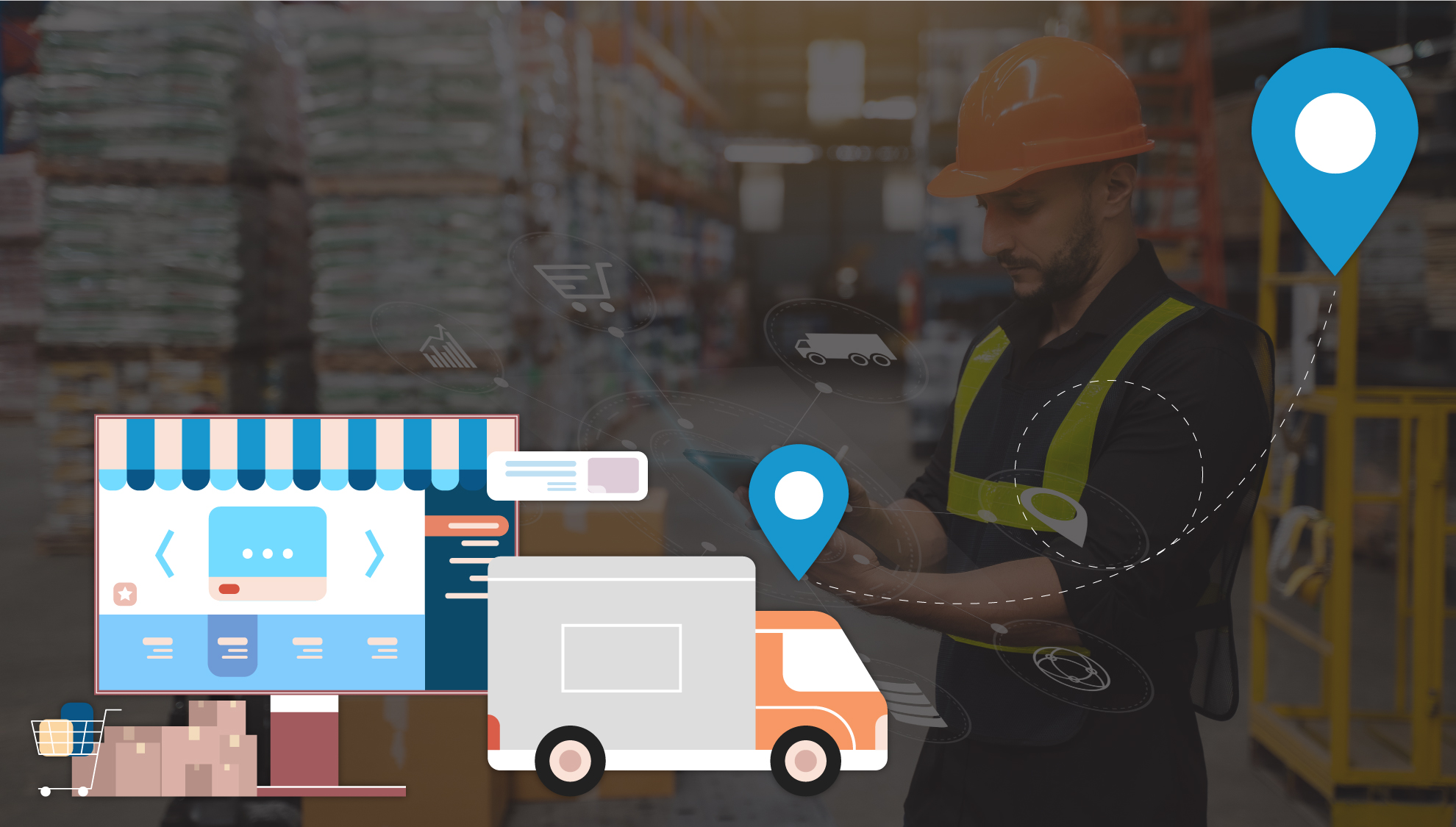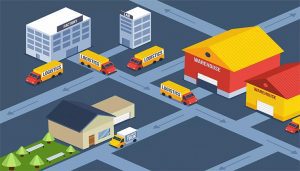From brushing our teeth in the morning to sanitizing our home environment to making our favourite dishes for dinner, we are constantly surrounded by an orbit of FMCG products. I find it riveting how the evolving consumer demands have incited FMCG wars to constantly produce new flavours, new packaging, new products, new price-points, new SKUs etc. to offer purpose-led products in nearly every product category you can think of.
Today, even a simple product like toothpaste is an Rs. 10,000 crore market in India! A common man like me is spoilt for choice because I have 10 brands and 30 flavours of cookies to choose from. But what if my Kirana-Wala tells me that my favourite multi-fibre biscuit isn’t available in 75gms, only in the assorted pack of 500gms? With such cut-throat competition, can an FMCG brand really afford to have such supply chain hiccups?
A major issue that businesses face when dealing with large-scale operations is the efficient management of their supply chain. Most often, a broken link in the supply chain can go unnoticed till a severe impact hinders business growth. Personally, I have seen companies lose millions in revenues when they missed or ignored signs of a busted supply chain, but the good news is, you can catch these symptoms early. Here are the top 5 signs to look out for:
Table of Contents
Toggle1. A ruptured manufacturing-to-fulfilment process
The COVID-induced lockdown of 2020 caused a shortage of labour and forced FMCGs to run their manufacturing units at partial capacities. Scarcity of transport further hampered distribution, thereby affecting supplies to retail outlets. In such a scenario, most companies took the e-commerce route, started retailing directly from their company website or tied up with third-party logistics companies to fulfil last-mile delivery. Even biggies like P&G and ITC explored innovative options like parcel trains to ferry essential products, some of which saw accelerated demand due to Covid-19.
However, many stayed true to their business model and used IT to realign their processes. During peak COVID months, Emami redirected its efforts using SFA solution to ensure stocks reached the retail shelves. As retail direct distribution was not feasible due to the increasing number of containment zones, they focused on driving growth through wholesale and rural channels. Mohan Goenka, Director, Emami Limited quoted last year, “We have initiated van coverage in rural markets, introduced loyalty programmes along with advertisements in mass media. We are also investing in digital marketing to connect with our rural consumers.”
Companies like Emami overcame their challenges by optimizing their supply chain through data and by using sales automation to make quick, informed decisions. Other FMCGs reached out to third-party supply chain firms that had a strong digital backbone to distribute their products timely.
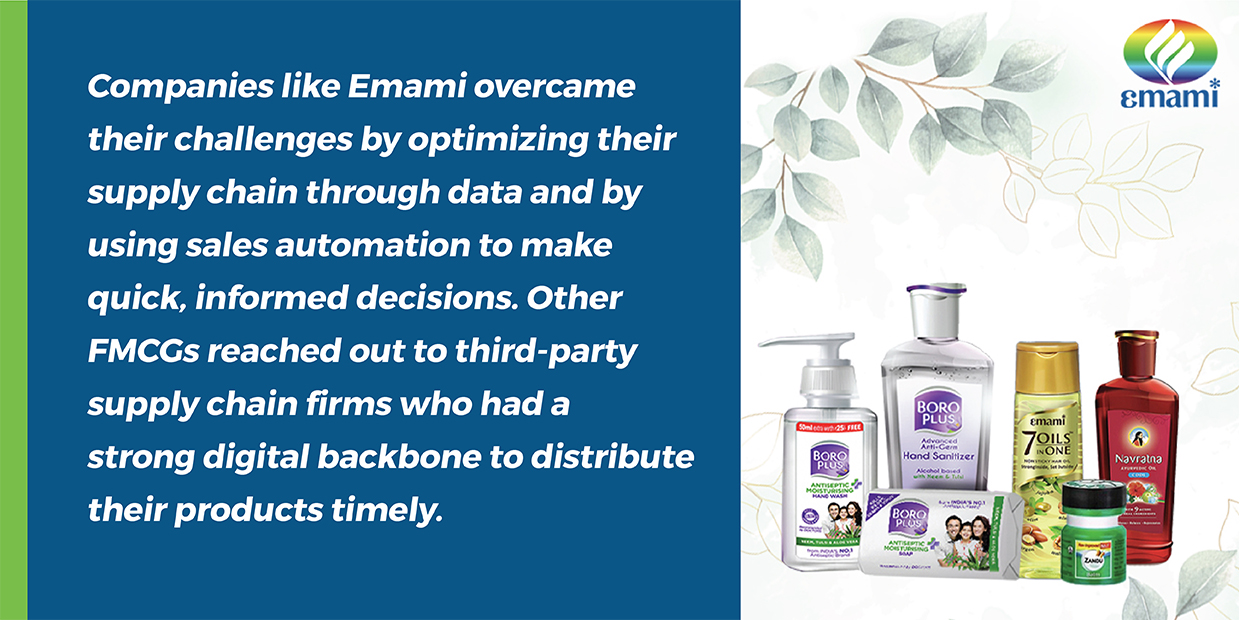
2. Inaccurate consumer-level Market Intelligence
When Svami Drinks launched in India, it introduced 3 low-sugar products specially created for the Delhi market, because their market intelligence indicated that a large part of their target audience in Delhi prefers sugar-free or low-sugar drinks. Unfortunately, the low-sugar products did not do very well, but when Svami Drinks introduced sweeter drinks, they did great!
Capturing accurate, authentic market intelligence is therefore critical to make your supply chain that much more effective. Brands are tapping a direct line into consumer preferences via sales force automation solutions because consumers are more aware and more vocal about what they want to buy. People are becoming value seekers. They want quality as well as affordability and they want it on the retail shelves wherever they are.
Using intelligence from their salesforce solution, Coolberg Beverages, an Indian trailblazer in premium non-alcoholic beers, was able to effectively launch new products in the price range of Rs 10-15 to expand market penetration in Tier II and Tier III cities.
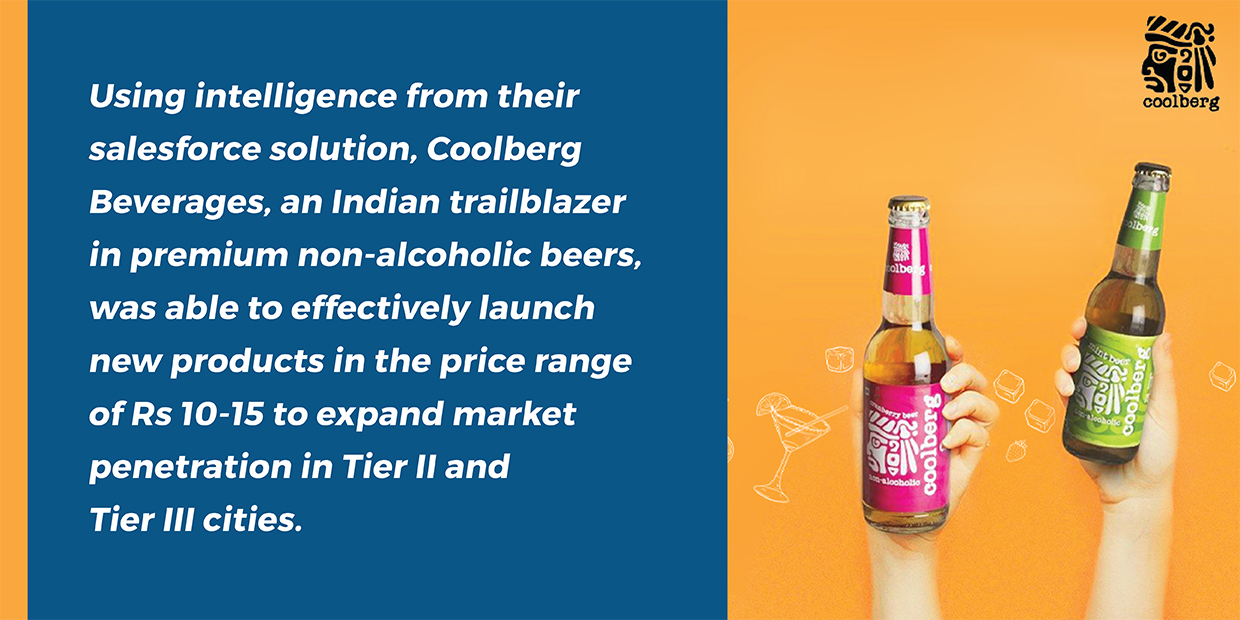
Read How Coolberg brings the fizz of Non-Alcoholic Beer for Millenials
In my opinion, receiving fragmented and inaccurate data on customer purchase patterns, trends, demographics, age group etc. can have a snowball effect on the supply chain because the entire sales strategy is then built on redundant or inaccurate data. A full-service sales automation platform has features like on-demand surveys where customer information can be captured in a jiffy and monitored in real-time. E.g feedback on a new product launch, whether they have bought your brand before, their perception of your brand, their income group etc.
3. Stockouts, over-stocking and lost sales with large SKUs
If you’re a brand with a complex supply chain and a vast number of SKUs, inventory management can look like an uphill task. One of its biggest challenges is inadequate demand forecasting, which can cause stock-outs or oversupply of inventory, both of which are undesirable. Research shows that retail stock-outs are as much as 25-35%. Fast-moving items experience higher stock-outs. Sometimes, the traditional yardstick of in-stock % may not show the complete picture of demand loss.
For example, if the slow-moving products are high in-stock, it will hide the real demand opportunity loss. Stock Outs cause lost sales, dismay shoppers, diminish store loyalty, jeopardize marketing efforts, and obstruct sales planning because substitution disguises true demand. Using technology can help significantly minimize these losses and get tighter control on inventory management. However if not used correctly, technology can cause erosion of revenues, goodwill and brand value, as it did for Nike.
In 2001, without conducting necessary trials and tests, Nike installed a demand-planning software. As a result, it had an excess stock of low selling shoes and not enough stock of the popular Air Jordans. According to a Nike press release, the mismatch directly resulted in a loss in sales of $100 million!
4. Lack of end to end digitization
If we have learnt one thing from 2020, it is that technology was the saviour of all mankind. Most brands deployed some sort of technology to keep their business going. Nevertheless many made the mistake of automating only some of the workflows or using different software for different processes. You want to move forward not in reverse.
Companies that leveraged end-to-end digitization to automate their supply chain systems could cull out real-time actionable analytics, expand their market penetration wider and deeper, and establish a unified flow of data from all operations workflows.

AMUL harnessed IoT to track inventory and to pivot their strategy towards a seamless supply chain. “The pandemic situation was extremely critical for us since this is an essential service. But thanks to our integrated IT infrastructure, during the lockdown, our supply chain of 3.6 million farmers, 18,700 societies, 5,000 milk tankers going to 200 chilling stations, making 750 SKU, then going to 62 branches and 10,000 distributors and one million retailers, I knew exactly what was happening at every point- where tankers are being stopped, in which village milk has not been collected, and which market tankers could not go. Technology is being used every day by everyone, but during the lockdown, it was very critical for us. AMUL signed a 10-year partnership with IBM, which conducted an IT architectural and strategy study and developed an IT strategy roadmap for us,” says RS Sodhi, Managing Director, GCMMF Ltd (AMUL).
5. Cumbersome Government policies & taxes
When the GST system was implemented, the Indian Government announced different GST rates for different goods or products under the FMCG. While it was largely hailed as a transformational measure, on-ground realities showed it was more difficult to implement than anticipated. For e.g. Like Shekhar Agarwal, Director, Surya Food & Agro Ltd. (Priyagold Biscuits) said at the time, “We faced a lot of challenges at the retail level when it became an arduous task for a shopkeeper to sell or bill different food items marked with different GST slabs. This was also one of the biggest deterrents of switching to plastic money to purchase biscuits. The overall sale and production of biscuits consequently decreased by 15% to 20% the year GST was implemented.
Government policy changes or ad-hoc changes in taxation can dramatically impact the supply chain of any business that is reliant on the implications of the policy. This is an excellent indicator of the supply chain links within business operations. If your business is impacted by a policy that doesn’t allow heavy-duty vehicles on a national highway during day-hours, the business will not meet consumer demands in the pertaining areas.
If you notice closely, what emerges as the common denominator in resolving most of these challenges is technology. The ultimate purpose of optimizing your supply chain is so that your customers get what they want, whenever they want it. Don’t be afraid to leverage new technologies to plug these gaps. The secret is to make your sales supply chain more consumer-centric, more demand-driven and you will see how quickly your brand charts growth as well as revenues.
About Post Author
Rashmi Kapse
Rashmi is a Content Specialist at FieldAssist. After spending 11 years in the Executive Search business she decided to change tracks and follow her passion for writing. For the past 8 years, she has been writing on Sales Tech, HR Tech, FMCG, Consumer Goods, F&B and Health & Wellness.

